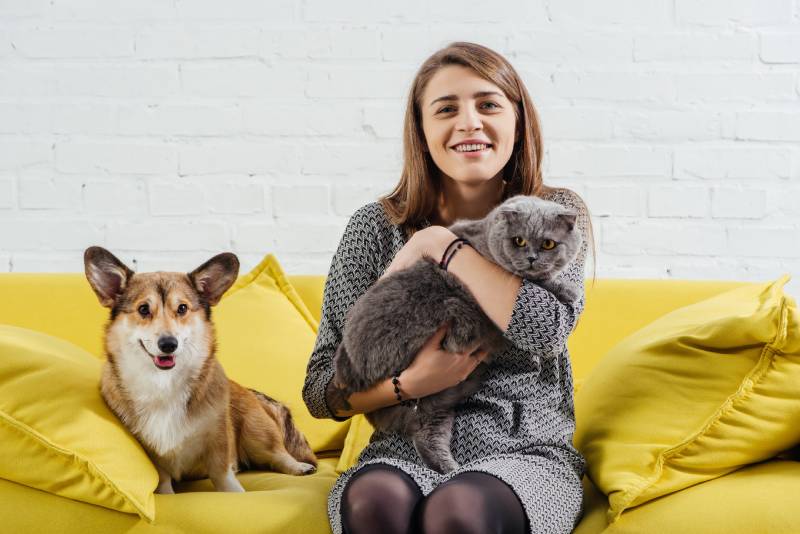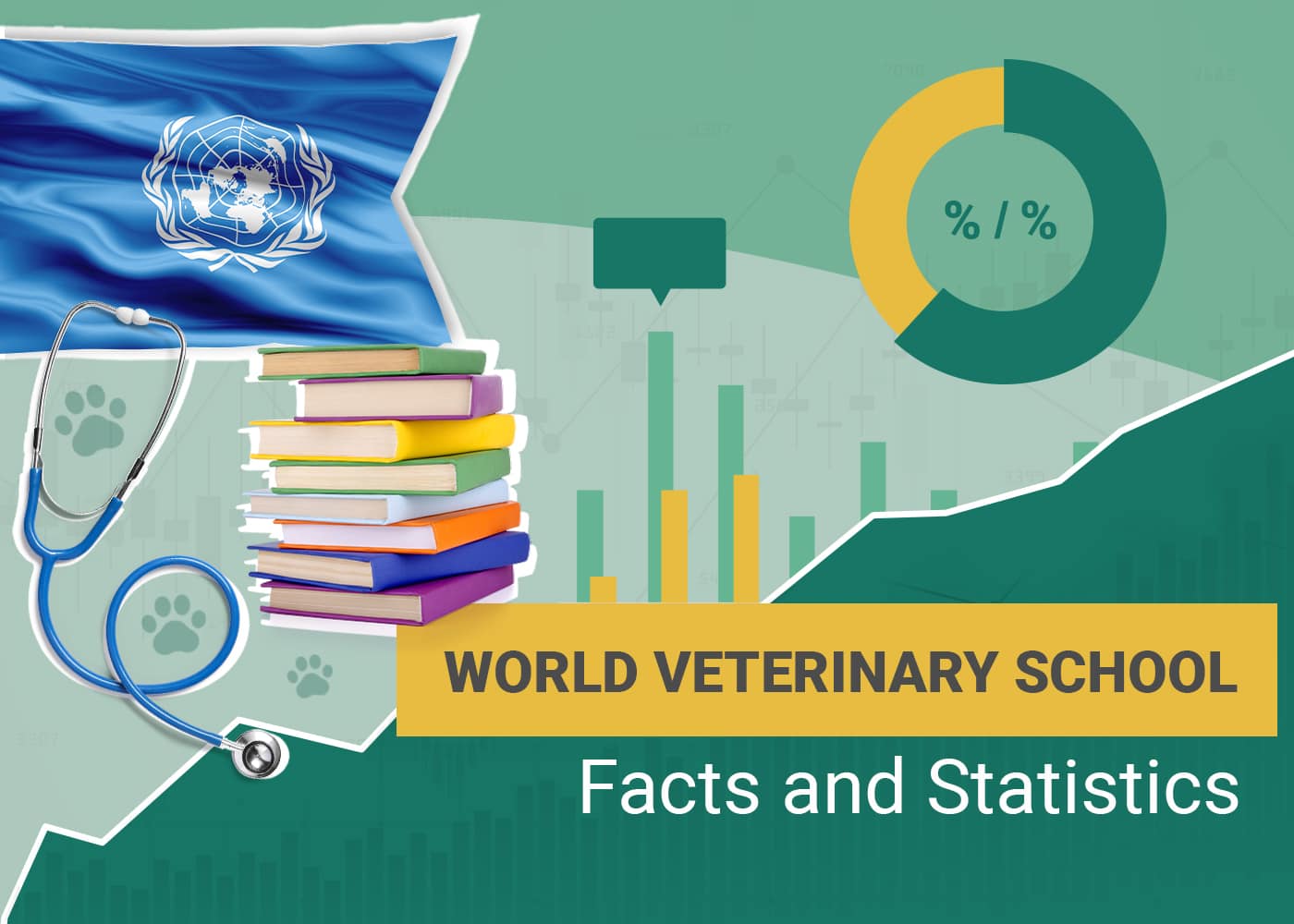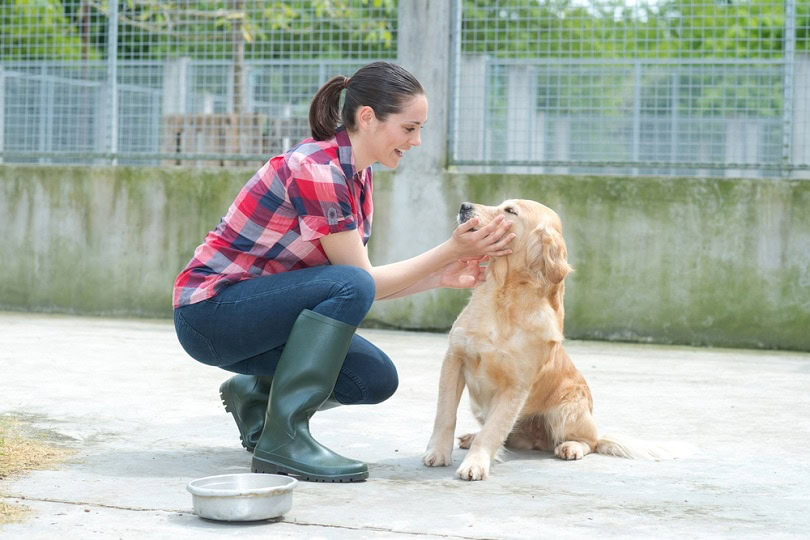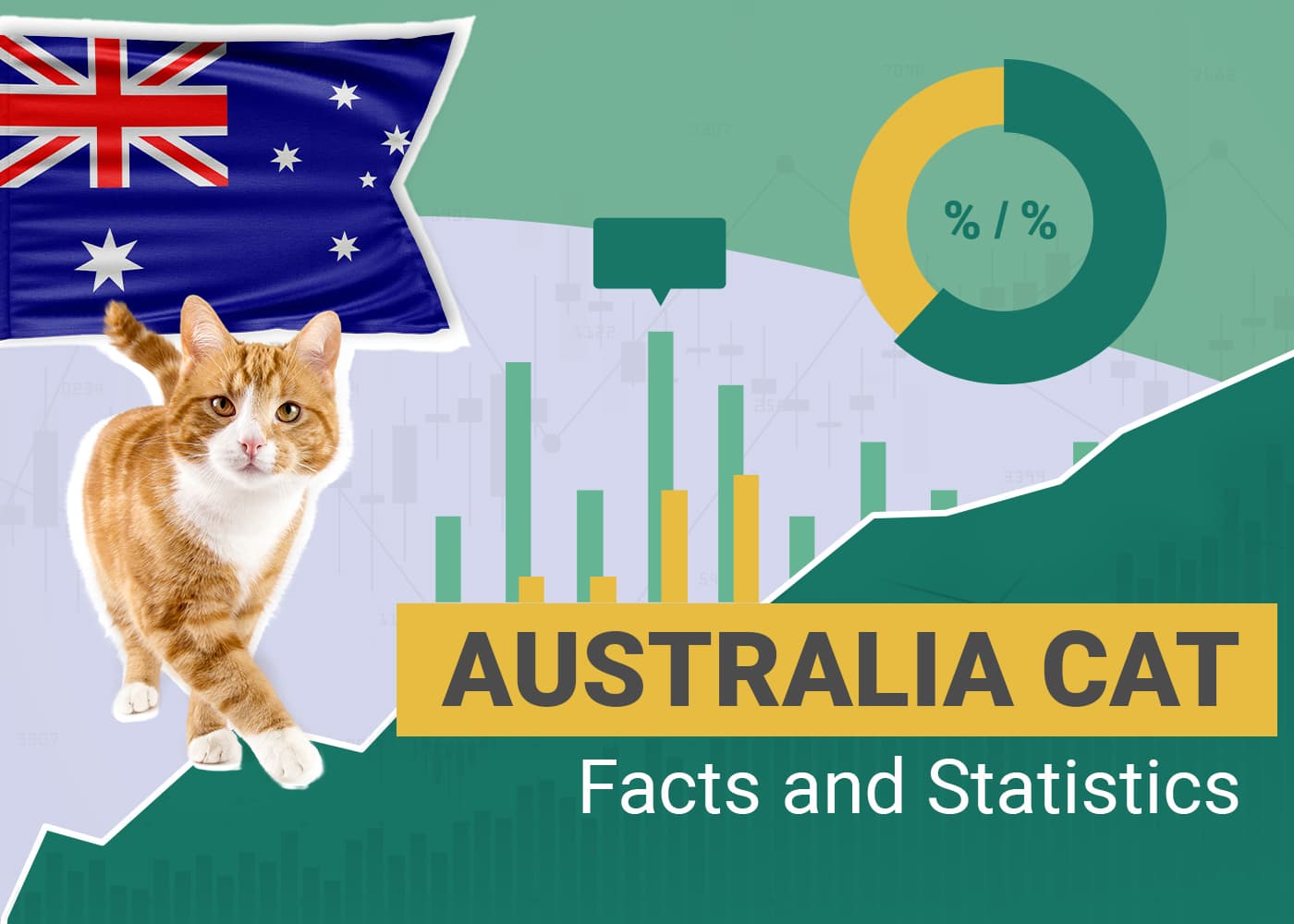Click to Skip Ahead
Our dogs and cats have been our companions for thousands of years. Humans have worshipped their pets and pampered them, showing how much we revere them. According to the American Pet Products Association (APPA), 82 million Americans have welcomed a pet into their lives 1. That’s up from over 56% in 1988. To say we lavish love and attention on them is a gross understatement.
In fact, the APPA estimates that Americans spent over $150.6 billion 2 on their pets in 2024. The message is clear: we’re willing to spend lots of money on our pets. Even our relationship with our animal companions has changed. The question is, what are the effects of this pet humanization on them and the industry?

The Rise of Pet Parents
Domestication of wild canines began as far back as 27,000 years ago. The road to becoming man’s best friend has been rocky at times. Remember that early humans were hunters, too, making us competitors and a far cry from companions. History has had several dark moments where we were hardly hospitable pet owners. People were particularly harsh toward wolves, going back to the sixth century B.C.
Something curious happened on the way to Rome. People started caring about their dogs and even started feeding them what they thought were the best foods for them. Fast forward to the 20th century, and we have dogs as heroes. Some are fictional, like Lassie, and others are real, with the legendary Balto and his serum run that saved countless children from diphtheria in Nome, Alaska.
A boy and his dog became an iconic image. However, one thing was evident: our pets endeared themselves to us and became our best friends. We began to see the rise of three kinds of pet owners.
Some have pets for practical purposes. Think of the farm cat that is the resident mouser or the dog guarding livestock or one’s home. Then, some genuinely love their pets but are keenly aware of the fact that they’re animals and not people. Finally, we have the so-called pet parents and their fur babies. These are the ones who will buy the most expensive dog bed they can afford. They will sleep with their companions and spare no expense when it comes to food, play, or veterinary care. Usher in pet humanization.
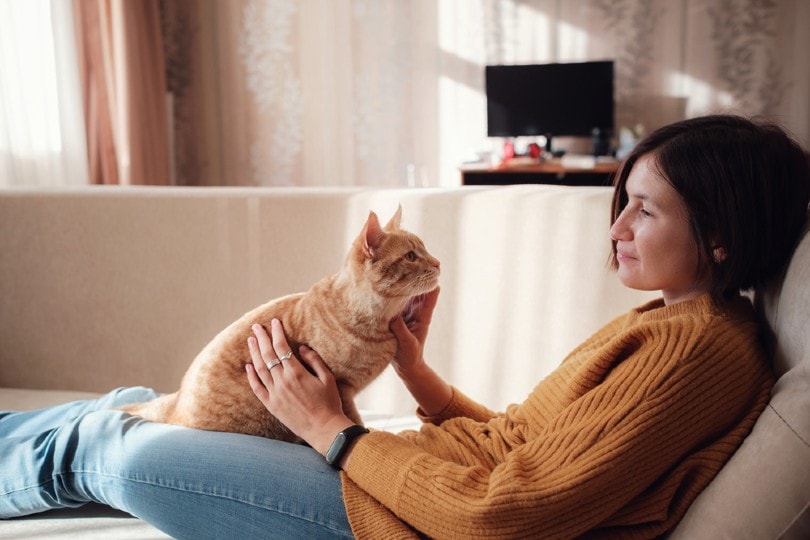
Indirect Human Factors
We’re going to take a short side trip into a change and subsequent trend that undoubtedly fueled the fire toward this paradigm shift. We’re talking about the Dietary Supplement Health and Education Act of 1994 (DSHEA). Essentially, it opened the door for manufacturers to produce and sell dietary supplements without pre-market approval. It swiftly became a revenue stream for the health-conscious.
It also paved the way for a new way of thinking. First, for human health and then, eventually, with their pets. It’s understandable that people would want the best for their animal companions or fur babies. Marketers did an excellent job of convincing consumers they needed dietary supplements whether or not the science supported their claims. It was only a matter of time before they found the pet industry.

The Good, Bad, and Ugly of Pet Humanization
It’s a rare thing for a subject to have only two sides. The same applies to pet humanization. The overriding problem is balance, which we’re seeing now as the marketers have run away with this concept in many directions, both good and bad. We’ll preface by saying the industry is responding like any other would when given the relatively free reins that it has. Sadly, some actions have consequences.
Good: Pet Health
We discussed the evolving relationship people have had with their pets. They have benefited tremendously from this development. Our animal companions are healthier than ever. The United States has eradicated canine rabies. Bear in mind that it doesn’t apply to other forms or carriers of the diseases. Nevertheless, our pets have access to better health care, food, and treatments. Our cats and dogs have never had it so good!
This has spilled over into more research to understand how to treat our pets. Think of organizations like the Orthopedic Foundation for Animals (OFA) that have helped curb the spread of hereditary diseases. Agencies like the FDA keep our pets safe with food recalls and oversight of the manufacturers making these products. The ASPCA makes sure we treat them humanely.

Good: Human Health
However, our pets aren’t the only ones who have benefitted. Our dogs begging us to go on walks has improved our cardiovascular health. They motivate us to stay active and fit, which is the essence of a win-win. Our pets were a blessing during COVID-19, helping us cope with lockdowns, anxiety, and mental health issues. It’s no wonder that 33% of Americans considered getting companions during the pandemic.
We can safely say that when humans and wild canines became BFFs, it began a beautiful friendship for both parties. All pets with a strong bond with their owners have better mental health, too, with more stimulation and challenges. The relationships between animals and people are closer than ever.
Good: Companion Animal Research
Another favorable consequence of pet humanization is more funding and interest in animal research. Decades ago, it may have been unheard of to find pet foods formulated for specific breeds. The pet industry is more innovative than it’s ever been, with people willing to dish out the money to give their animal companions the best of everything.
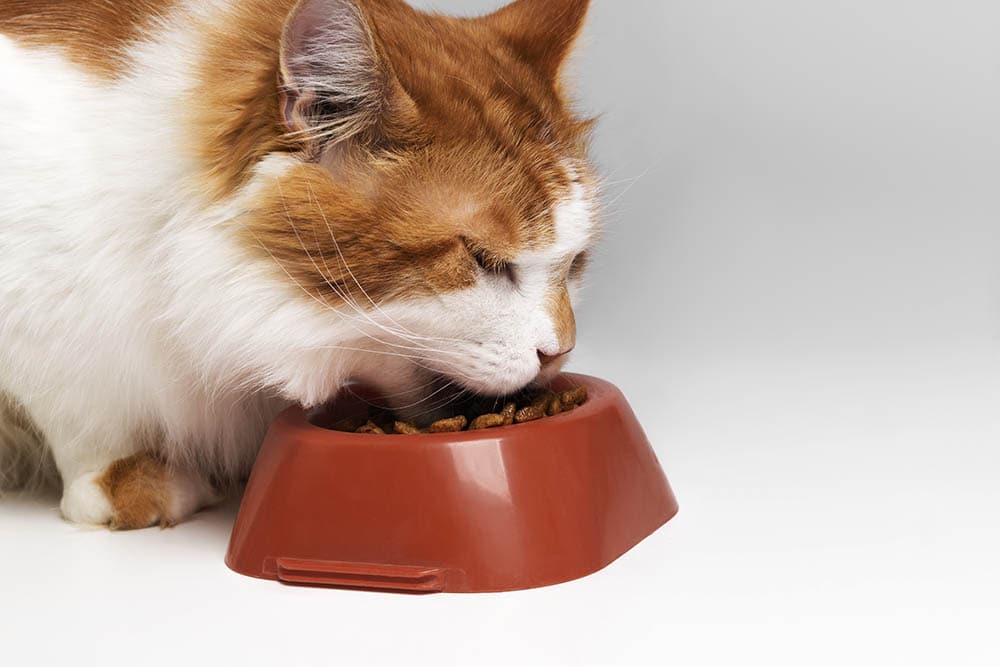
Bad: Poor Dietary Choices
We mentioned the influence of other industries on people’s choices. It’s also evident, particularly in foods and treats. Unfortunately, marketers have created and fueled many misconceptions about pet diets, giving rise to the so-called boutique diets. The aim of some advertisers seems to be to appeal more to the owners than to provide superior nutritional value.
Take the inclusion of human foods, such as cranberries, blueberries, and other recognizable foods. Dogs are omnivores, but they still require a large amount of quality protein. Many protein sources are listed so far down in the ingredient list that there isn’t much protein in the recipe at all. Marketers also play up real meat as the first ingredient.
While that’s a good thing, it also comes with other misconceptions, especially concerning byproducts. According to the Association of American Feed Control Officials (AAFCO), these ingredients are not inferior but more of an aesthetic consideration that manufacturers use to boost their byproduct-free foods.
It’s worth noting that the AAFCO develops nutritional standards for pet foods with the FDA. The same deception applies to the names of ingredients. Some advertisers belittle foods with “unpronounceable ingredients.” More often than not, they are chemical names for nutrients. Perhaps the most egregious marketing scheme is the use of “human-grade.” The fact is that no animal feed regulation exists for the term. It’s simply advertising with no legal meaning.
The pet industry has benefitted handsomely from this tightrope walking. Food and treats make up over 43% of the revenue it generates. However, another issue arising from the evolution of these products is even more alarming.
Bad: Pet Diets and Health
Fad diets come and go. One of the more extreme trends has been gluten-free or grain-free options. Individuals with celiac disease must refrain from eating gluten-containing foods. However, somehow, this trend also caught on as a healthy diet option. On the one hand, it raised awareness of the autoimmune condition, which has indeed helped those living with it.
On the other hand, it has made its way into the pet food industry under several guises. Some claim it can help treat allergies. However, most are caused by animal protein as the trigger and not grains, as the labels suggest. Furthermore, veterinary medicine has never found gluten allergies in cats. Again, the hook is baited for the consumer and not a health benefit for the pet.
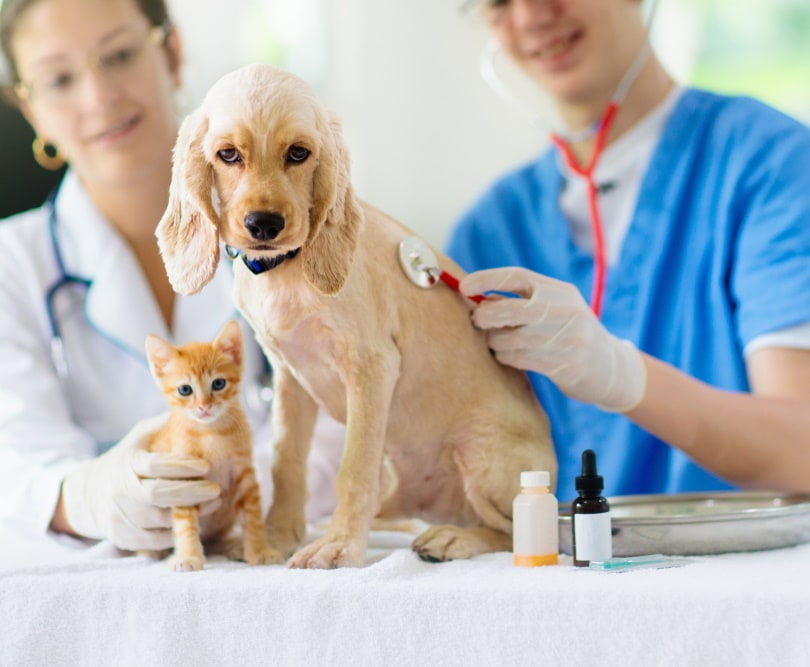
Canine Dilated Cardiomyopathy
This factor is a potential consequence of our last point. Many manufacturers have substituted grains in their diets with other ingredients, most notably legumes like chickpeas, peas, sweet potatoes, and potatoes. The FDA reported a spike in cases of canine dilated cardiomyopathy (DCM) starting in 2018. While it is inherited in some breeds, like Golden Retrievers, it is occurring in many others. However, the FDA has stated that they will not make another announcement until more scientific research is solidified.
After investigating the issue, the FDA concluded that there may be an association between DCM and the ingredients in pet foods, particularly legumes and peas. Ninety percent of the documented cases involved pets fed a grain-free diet. The investigation is still ongoing. However, circumstantial evidence suggests it’s a fallout of pet humanization and its associated marketing.
Ugly: Pet Health
Pet humanization has also encouraged people to love their pets and show them freely. While both have benefitted, we may have gone overboard in some cases. Over 50% of dogs are overweight. As with people, it can have serious health consequences and shorten their lives by up to a year. It can also cause and aggravate conditions that can affect their quality of life, such as osteoarthritis.
Ugly: Anthropomorphism
Pet humanization can lead people to think of their pets as more human-like than they are. While it’s true that canines and humans share 84% of our DNA, the devil is in the details. The risk exists of falling into the anthropomorphism trap or viewing our pets as little people. We mustn’t lose sight of the fact that they are animals with different physiologies and dietary needs.
This is evident in what we can eat and our pets can’t, such as chocolate, onions, and garlic. We also navigate our worlds differently. For example, what we see clearly at 100 feet away, a cat must be 20 feet from the scene to see it as we visualize. Another example: a dog’s world is filled with scents that we can’t detect. The takeaway message is that our respective needs are not the same.
Unfortunately, this line is blurred in other segments. The legalization of CBD in some states and the passage of the 2018 Farm Bill have opened up a proverbial hornet’s nest of use of these products for pets. Organizations such as the American College of Veterinary Pharmacists and AAFCO have expressed concerns about CBD and hemp-based products. Some may contain ingredients toxic to pets.

The Path Ahead
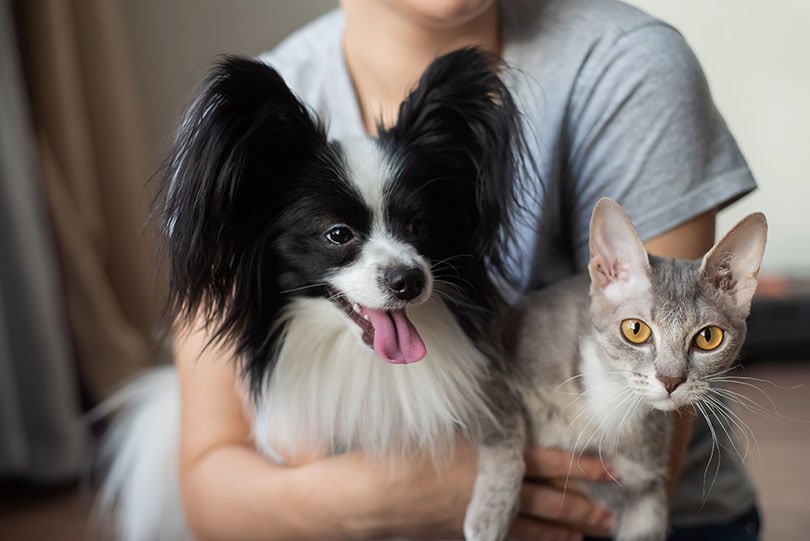
We don’t want to paint a grim picture of pet humanization on all fronts. We’ve seen many good things come from appreciating and loving our pets. The pet food industry certainly has benefitted from this trend and its fulfillment of owners’ new demands. However, it’s essential to bring marketers and veterinary medicine together to navigate this evolving landscape.
Issues like DCM remind us that pet health must be at the forefront of the discussion. Education is also imperative for manufacturers, veterinary practitioners, and owners, irrespective of whether your dog or cat is a family member to you. We are treading into new territory with pet humanization, which raises many questions and concerns about the good things it has brought to people and animals.

Final Thoughts
The best quality of life we can offer our animal companions isn’t one bolstered by marketing. Instead, we should enjoy our pets for the joy they bring into our lives. But remember that, first and foremost, they are animals and not furry humans. After all, pet ownership is a responsibility. It’s your job to research any product choices. However, feel free to discuss these issues with your vet to get the facts.
The knowledgeable customer can make informed choices. Bear in mind that the pet industry has its motivations, too. Your task as a pet owner is to see through the marketing messages and buy what’s best for your animal companion on their terms. There’s no harm in calling your pup your fur baby, but let your pet be a dog or cat first.
- https://www.americanpetproducts.org/press_industrytrends.asp
- https://www.statista.com/statistics/961451/us-fruits-and-vegetables-market-size/
- https://www.science.org/content/article/ancient-wolves-give-clues-origins-dogs
- https://www.nationalgeographic.com/animals/article/130302-dog-domestic-evolution-science-wolf-wolves-human
- https://www.nature.com/articles/s41598-017-16118-6
- https://www.voanews.com/a/covid-19-pandemic_americans-find-comfort-pets-during-covid-pandemic/
- https://www.forbes.com/advisor/pet-insurance/survey-78-pet-owners-acquired-pets-during-pandemic/
- https://www.livescience.com/53466-carnivore.html
- https://vetnutrition.tufts.edu/2016/06/why-you-shouldnt-judge-a-pet-food-by-its-ingredient-list/
- https://talkspetfood.aafco.org/byproducts
- https://talkspetfood.aafco.org/humangrade
- https://www.fda.gov/animal-veterinary/outbreaks-and-advisories/fda-investigation-potential-link-between-certain-diets-and-canine-dilated-cardiomyopathy
- https://vcahospitals.com/know-your-pet/obesity-in-dogs
- https://education.seattlepi.com/animals-share-human-dna-sequences-6693.html
- https://vetmeds.org/pet-poison-control-list/cbd-oil/
- https://www.aafco.org/Portals/0/SiteContent/Announcements/Hemp
Featured Image Credit: LightField Studios, Shutterstock
